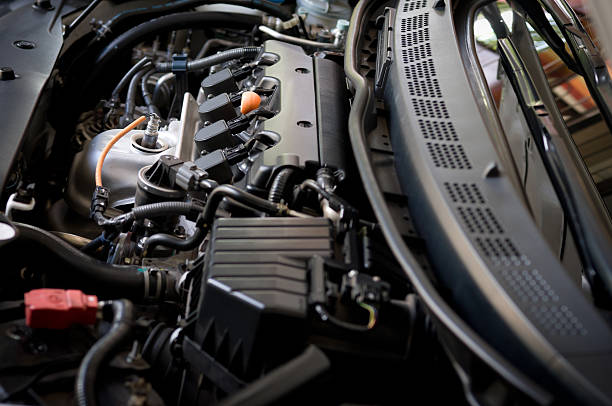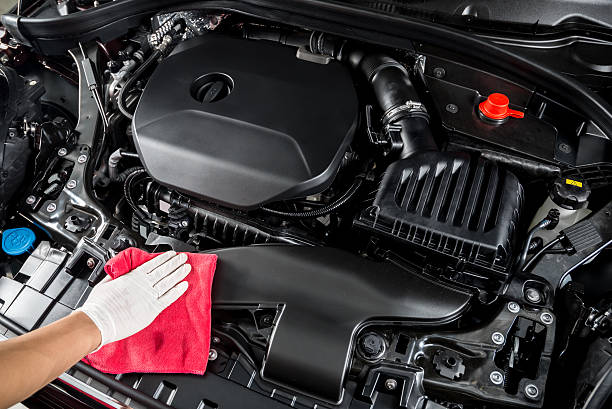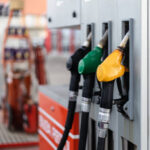Before cleaning a greasy engine bay, be sure to check your county and state laws for public car wash regulations as well as your car owner’s manual for cleaning & degreasing suggestions. You can visit a self-serve car wash if you’d prefer not to clean your engine bay at home. The law requires these facilities to recapture and clean water in a closed system that filters and collects any potentially dangerous materials for secure disposal, before reintroducing the clean water to the system.
Use a non-corrosive cleaner that won’t harm or degrade any metal, plastic, or rubber components when cleaning your engine. Vinegar shouldn’t be used because the acetic acid makes metal vulnerable to rust. Bleach should also never be used because it will corrode metals like steel and aluminum and damage rubberized seals. Bleach is composed of sodium hypochlorite.
Is It a Good Idea to Wash Your Car Engine?
Even though cleaning your car’s engine won’t necessarily increase performance, it will help you identify any problems. You can clear away any larger debris and inspect the hoses, components, and accessory belts.
Even though it might seem like a huge task, developing a semi-regular engine cleaning routine will make it simpler and quicker every time. Cleaning frequently will assist you in identifying and fixing any issues. particularly if you live in a climate where snow, salt, and grit are likely to work their way into the engine.
Is It Safe to Spray Your Engine With Water?
You can use water to spray your engine, but you must be very careful. Spraying water onto hot surfaces could cause warping or cracking, and you run the risk of getting burned.
Water could also enter electrical connections and parts, which is another possibility. It’s ideal to cover any electrical parts with plastic bags because even the tiniest amounts of water can result in serious issues. However, please wait until everything is completely cool before doing this!
How to Clean a Car Engine
Plan When You’re Going to Clean
The process of drying the engine components after cleaning can be sped up by choosing the right day to clean your car’s engine. Furthermore, you should pick a time when your car will most likely be cool. Although it may be easier to remove grease and dirt when the engine is still slightly warm, it’s crucial to avoid spraying engine cleaners on hot components.
Allow the engine to cool down for about 20 minutes if you’ve been driving or running it. You can test a small area before beginning when it’s cool enough to touch.
Remove Plastic Parts
Remove any plastic covers so they can be cleaned separately and help keep the engine from getting wet. Additionally, you ought to take out the battery’s negative terminal or just take it out altogether.
Cover Electrical Parts
Protect any electrical components by wrapping them in plastic bags. If you’re skilled at cleaning engines, you can skip this step, but doing so increases the likelihood that your electrical components will be harmed. It might take longer because you’ll have to be more thorough with your cleaning.

Degrease and Clean
Apply your chosen degreaser or engine cleaner all over your engine, thoroughly soaking areas with more buildup. Depending on the instructions for your product, let it sit before using a detailing brush to remove the gunk. If necessary, use more products to remove stubborn dirt.
Wipe Down and Rinse
If you want to be extra careful and avoid getting your engine wet, you can clean it first. Just go over all the areas where you sprayed cleaner with a damp microfiber cloth. This may take some time, though, because you want to make sure all of the product is removed.
Alternately, use a hose or pressure washer set to the lightest spray setting.
Dry the Engine
Wipe down the engine to remove any remaining moisture using a fresh microfiber towel. Picking a warm day at this point will be helpful because it will encourage the engine to dry naturally.
Directions for Cleaning An Engine in Another Two Ways
Manual Cleaning
- Apply cleaner. Spray a generous layer of Simple Green in your engine bay to completely cover it. For 3-5 minutes, let the engine cleaner soak into the area.
- Agitate. To stir up the accumulation of grease and grime, use a brush with non-metallic bristles.
- Rinse & clear. Clean your engine bay’s engine bay with a hose and a brush to remove any remaining dirt and grime.
- Remove coverings. To prevent spills on your electrical components after washing is finished, carefully remove the plastic bags by folding them inward.
- Dry. Utilizing a towel or air compressor, completely dry the engine.
Pressure Washer Directions
For engine cleaning, make sure you are using a high-pressure pressure washer with the proper PSI and nozzle tips. We advise starting 3-5 feet away from the surface and moving closer as necessary to prevent potential damage.
- Clear debris. Get rid of any loose dirt and debris that are near the engine compartment.
- Add cleaner. Fill the tank with Simple Green pressure washer detergent.
- Apply cleaner. To apply the solution to the engine, use a foam cannon or a low-pressure spray nozzle. For three to five minutes, let the cleaner reach the dirtiest areas.
- Rinse. When rinsing, use a higher-pressure nozzle while maintaining a safe distance to prevent pushing water into delicate areas like your carburetor.
- Dry. To get rid of any last drops of water, use a fresh towel or air compressor.
Other Car Engine Checks
Check the Engine Coolant
Just look at your engine coolant as a quick check. It has likely been tainted by an oil leak if the liquid appears cloudy or slimy. It’s crucial that the engine coolant is functioning properly because it prevents your car from overheating.
If the liquid itself appears to be in good condition, simply ensure that the level is correct and top it off as necessary.
Get An Oil Change
When cleaning the engine of your car, if you find any dirty oil, it’s probably time for an oil change. Dirty engine oil that appears thicker than usual can harm engine components, reduce your car’s fuel efficiency, and even cause a breakdown.
Check Your Fuel Injectors
Cleaning your car’s fuel injectors sounds like something you should leave to the pros if you’re not familiar with its components. However, if fuel injectors are left clogged for a long time, it can affect how well your car runs, how efficient it is at using fuel, and even how it idles.
Fortunately, you can read up on beginner- and intermediate-level techniques for cleaning fuel injectors in our guide.
Get a Full Engine Tune-up
A thorough engine tune-up will guarantee that your engine is not only clean but also performing to the best of its abilities. Even though this should be done about once a year, if you are skilled with car engine parts, you can perform this task yourself when you clean your engine.
You should inspect the air filter, hoses, and belts whether you do it yourself or hire a pro.
Conclusion: A Great Task
Adding the responsibility of keeping your car’s engine clean to your list of auto maintenance chores is a great idea. You might prefer to wait until your service, but cleaning might not be on the list of things a car service includes.
They won’t actually clean anything in your engine, but they will make sure all the fluid levels, including screen wash, brake fluid, and engine coolant, are filled. Thus, it is your responsibility to make sure they are working with clean components and are able to quickly identify any potential problems.
It depends on your mileage, the weather, and how frequently you use your car in general, but at least once a year is recommended. It’s best to schedule an appointment as soon as possible if you start to experience problems, hear strange noises, or feel it’s performing poorly.



